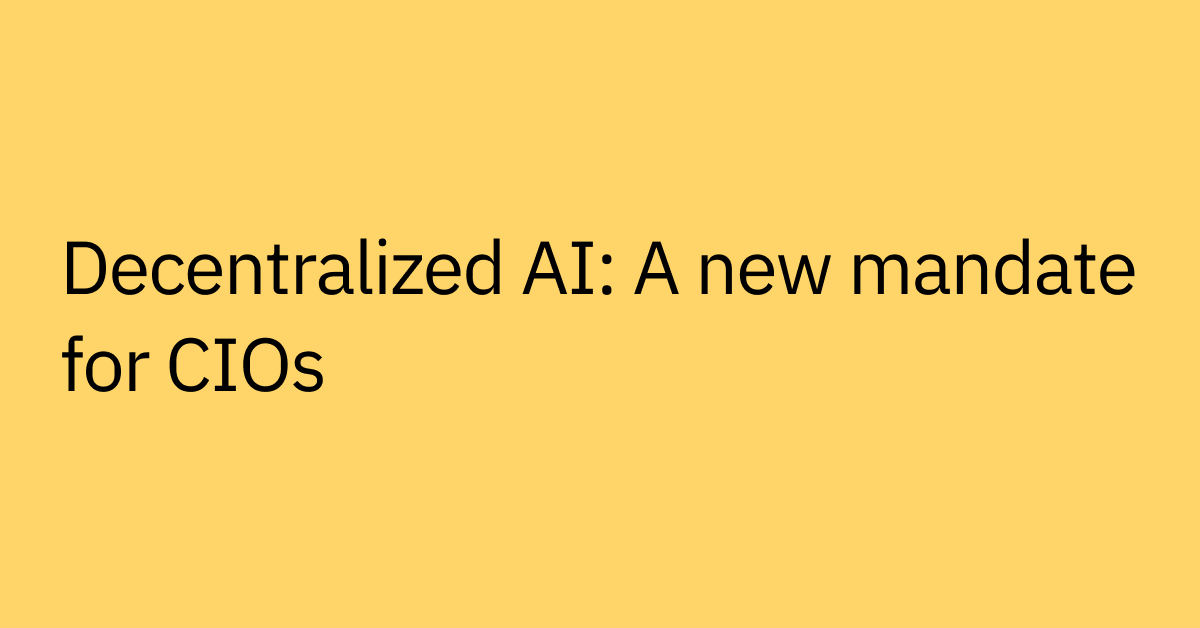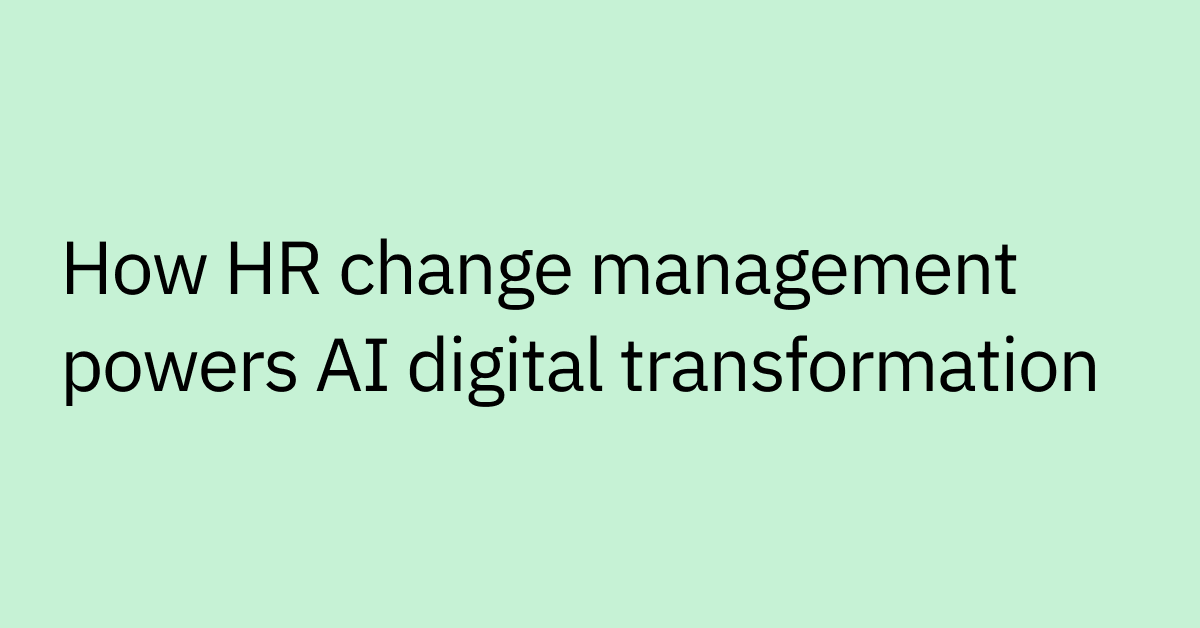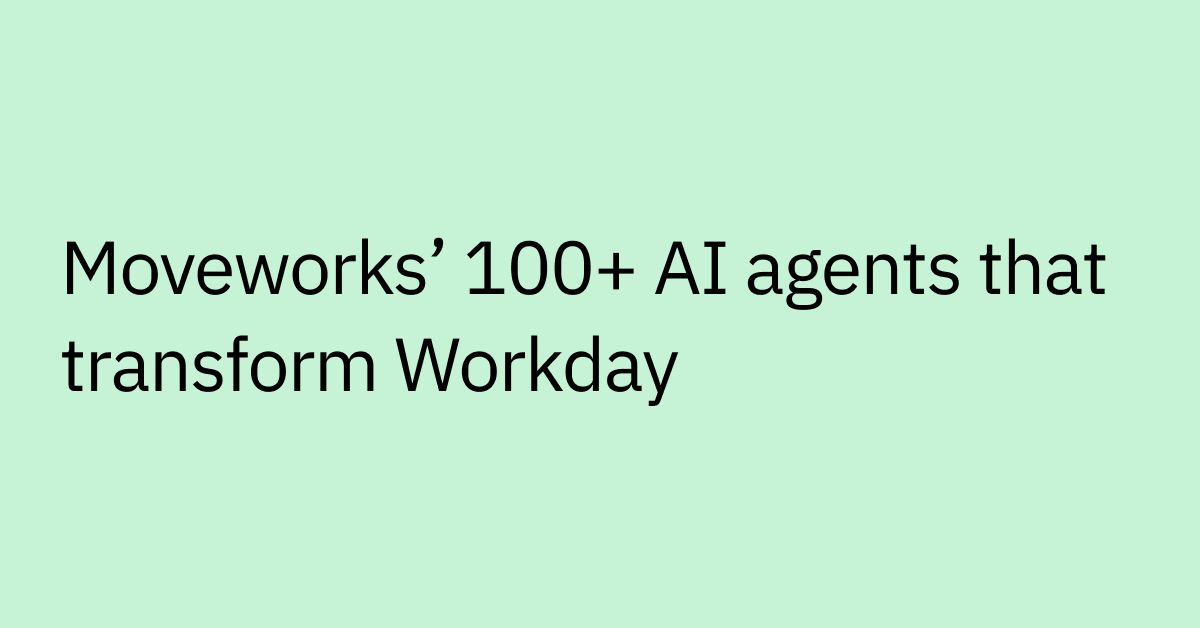Table of contents
Employees around the world suffer from the same problem: it takes forever to get answers at work. This problem is made even more frustrating given that outside of work, getting answers is as easy as Google.
Why do we go to Google? First of all, it understands our questions, even when they aren’t perfectly polished or particularly well framed. It also answers every question. Google’s not limited to science, literature, or business strategy. And finally, it’s smart enough to surface the most relevant results. Billions of people use Google daily because it really is one place for everything.
So why doesn’t getting an answer at work feel the same way? Well — internal support systems don’t understand us, resources are siloed, and responses aren’t personalized.
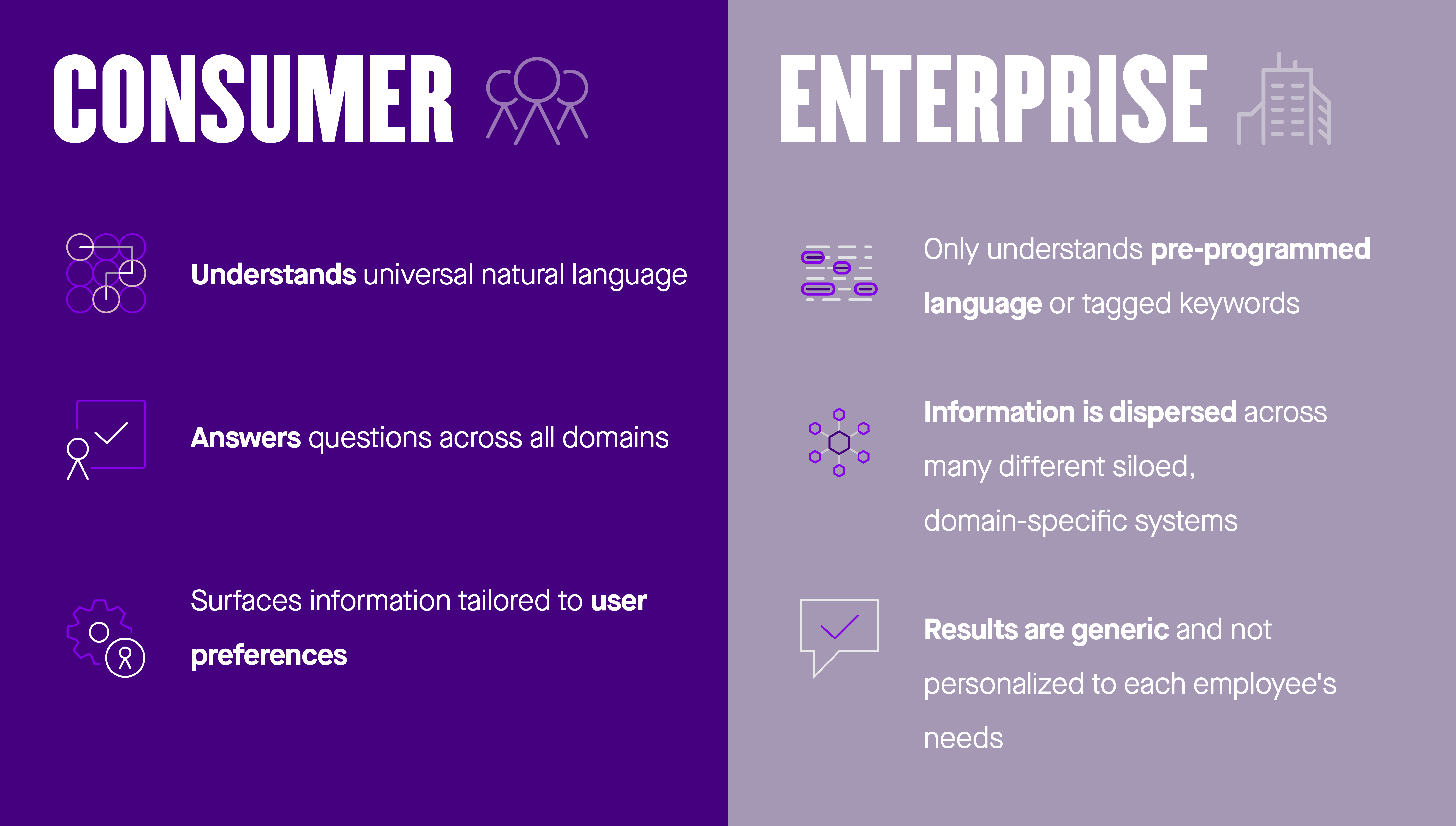 Figure 1: Bringing consumer search capabilities to the business world is a game-changer.
Figure 1: Bringing consumer search capabilities to the business world is a game-changer.
We last talked about this problem of enterprise search in 2019. Since then, we've developed layer upon layer of artificial intelligence (AI) and machine learning (ML) models to take in any question, understand it, and offer a precise, actionable answer.
Working with customers like DocuSign, Slack, and Broadcom, we’ve come to realize that the challenge of getting help at work extends far beyond IT. Seeing firsthand the responsibilities of other support teams — HR, Finance, Facilities — we’ve spent years building a comprehensive employee experience platform powered by AI.
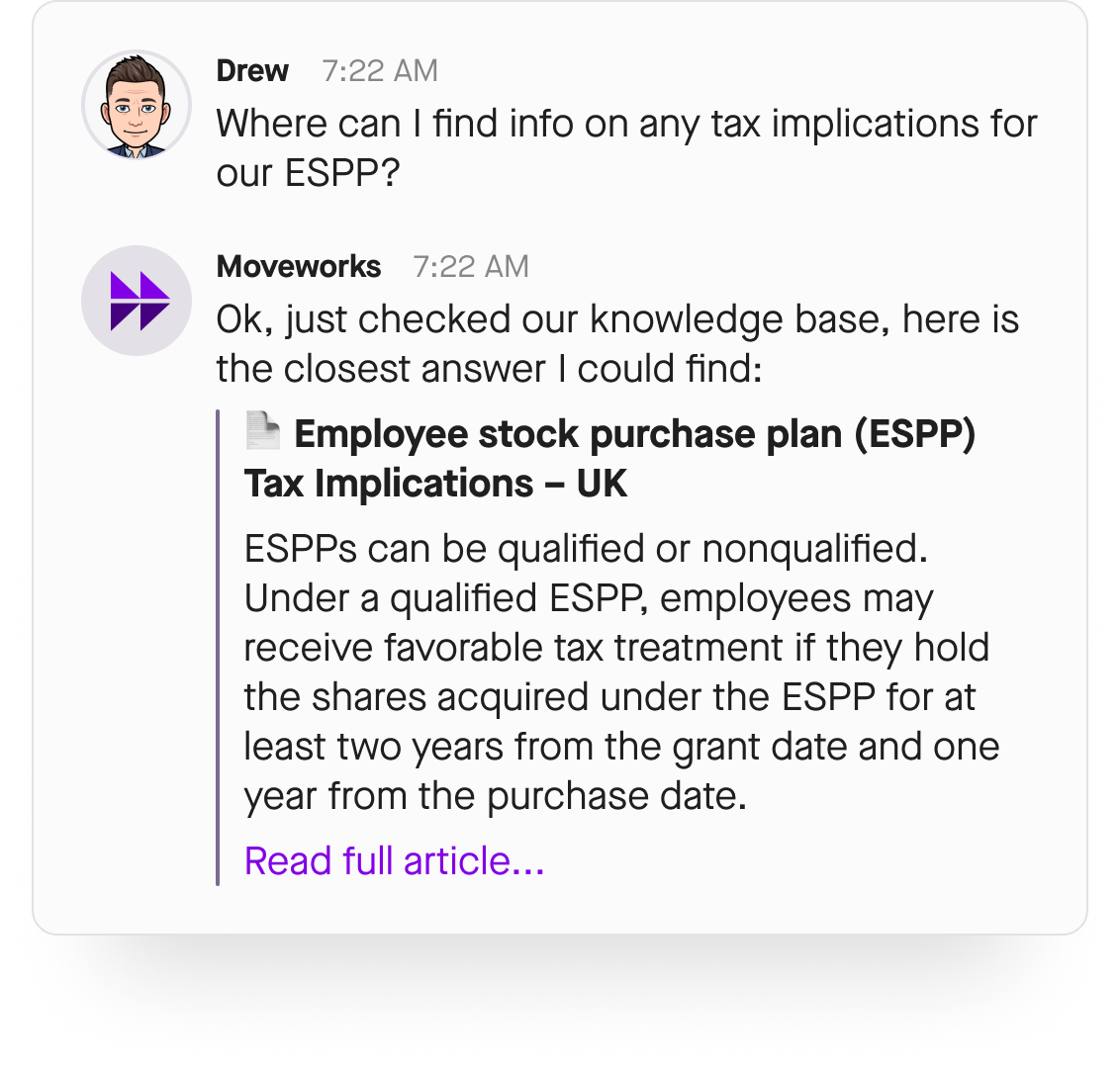 Figure 2: Moveworks is the go-to expert for every employee question.
Figure 2: Moveworks is the go-to expert for every employee question.
The blog explores the technology behind building an effortless employee support experience:
- Understanding every employee question
- Transforming complex resources into digestible snippets
- Matching questions to specific answers
Understanding every employee issue
Let’s start at the beginning: understanding what people need. A consumer search engine like Google works so well because its engineers have spent years building rich algorithms to learn how people communicate. Few companies have the resources to make something this powerful themselves.
So, support teams resort to conventional approaches, like manually keyword tagging knowledge base articles or other brittle techniques that lack the intelligence needed to automatically answer the thousands of questions employees ask.
At Moveworks, we realized that to jump this first hurdle we would need to break down the language people use to ask for help at work. Employees explain symptoms: My computer is running hot. I can’t find the certification training. When can I find my tax withholdings? These are standard, everyday issues that flood service desks. It’s easy, but time-consuming, for a support agent to answer these questions, and the ambiguity of the language makes it difficult for a computer to step in.
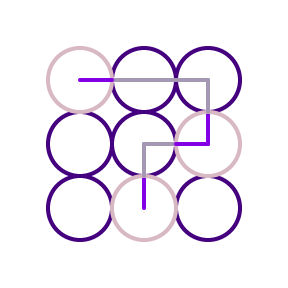
Moveworks Language Core™
Understanding this type of enterprise language is at the core of what we do at Moveworks. We’ve built Language Core™ — an AI-powered system that treats every question as complex words and phrases with context and intent, not just as clusters of keywords. Our system is designed to figure out what people need, no matter how their question is spelled or worded.
One of the primary challenges in understanding language is that every company has its own internal jargon, from conference rooms to WiFi names to job titles. We take in all these names, attaching them to a frame of reference. Using Collective Learning techniques that we’ve pioneered — we can see what employee requests have in common to understand more specific enterprise language.
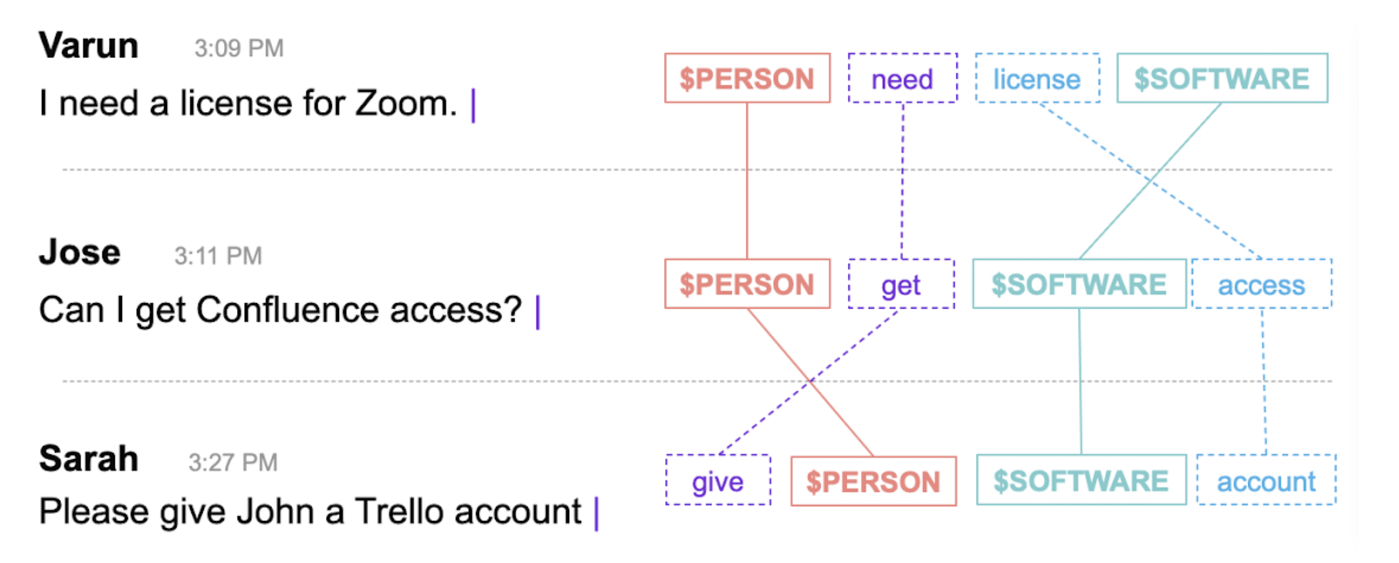 Figure 3: Collective Learning illuminates patterns across different lines of business, companies, and industries.
Figure 3: Collective Learning illuminates patterns across different lines of business, companies, and industries.
Now we've made the move to answering the full diversity of questions that employees have at work. To support all these different support teams, we've built what we call domain classification models to help our bot understand the difference between issues in IT, Finance, HR, and Facilities.
These models deeply break down employee language, taking in signals and context to decide how to best resolve issues. What’s particularly remarkable is that our bot can correctly categorize questions with 95% accuracy.
Once our bot understands the issue, what the employee needs, and the applicable domain — it has to be able to find the right answer. And this also requires a sophisticated approach.
Precisely answering questions across the enterprise
For each employee service department — IT, HR, Finance, Legal, Facilities — answers live deep inside different resources and systems. And usually, within these knowledge bases, the answer appears only once, a paragraph, a sentence, or even a phrase. The last time we wrote about enterprise search, we said that finding the best answer is like “trying to find the only needle in a haystack.” But now that we cover all these different departments — there are dozens of haystacks, but still only one needle.
When a subject-matter expert writes an article, they are trying to document everything. But this kind of detail can be difficult for employees to find, read, and understand. Knowledge articles can be thirty pages of potential WiFi issues, including everything from VPN complications to troubleshooting routers. And when it comes to HR — healthcare benefits articles can be hundreds of pages of text, featuring information from a dozen different countries.
The key is figuring a way to get the right information in the right hands. And we’ve done this with Enterprise Cache™ — a system that indexes available resources, so every question is answered with a single, precise snippet of information.

Moveworks Enterprise Cache™
Enterprise Cache™ solves two problems. First, the problem of hard-to-find information. And second, the problem of information accessibility.
To tackle this first problem — our solution ingests all the resources your employee service departments have painstakingly created, deconstructing them into chat-optimized pieces of information. Instead of a complete article, an employee gets a personalized snippet. Instead of a form, an employee only needs to fill out relevant fields. And instead of a full floor plan, they receive exact directions on where they need to go.
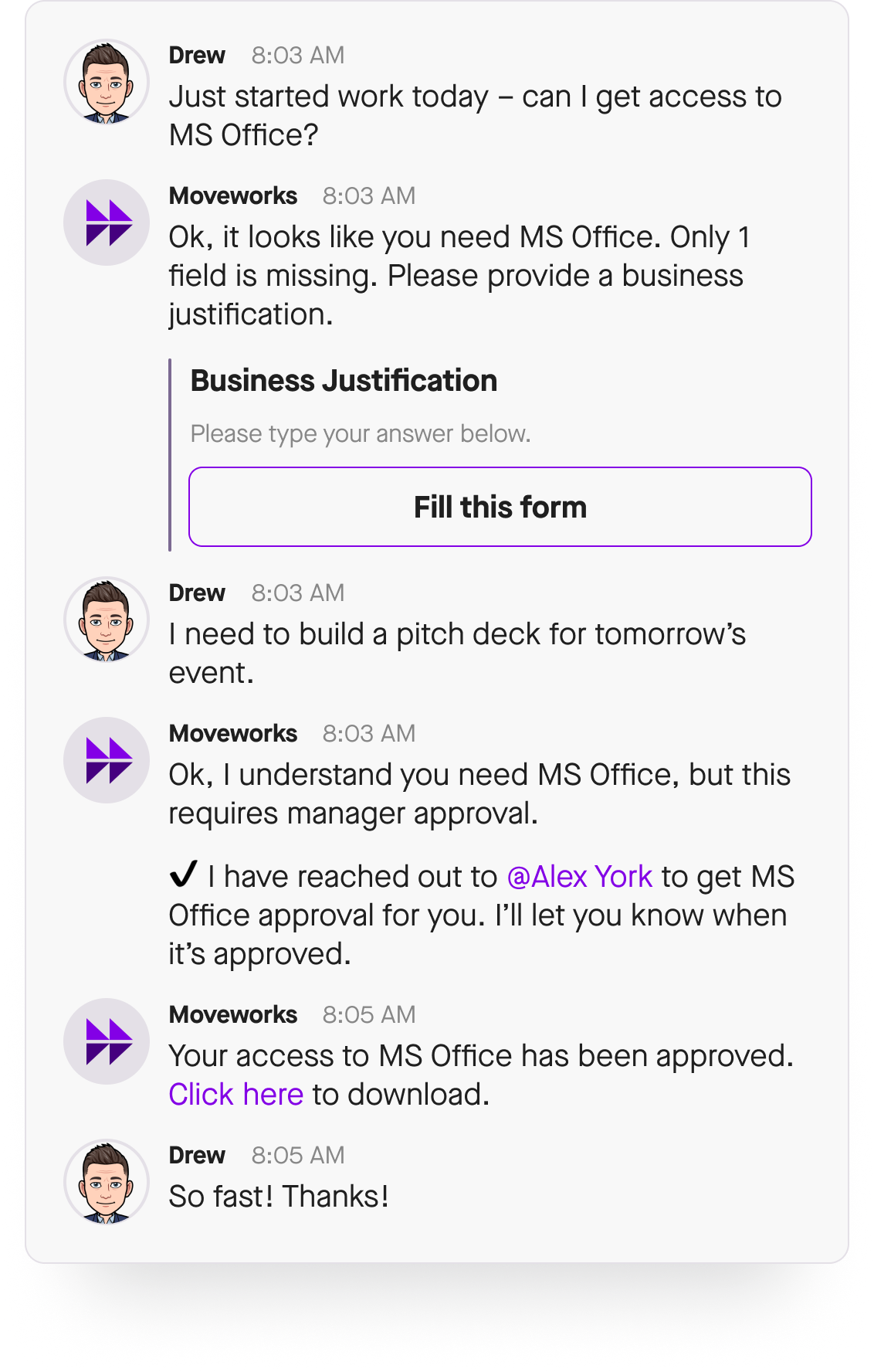 Figure 4: Moveworks personalizes the support experience by giving employees exactly the resource they need, whether that is a single sentence from a knowledge article or a conversationalized form.
Figure 4: Moveworks personalizes the support experience by giving employees exactly the resource they need, whether that is a single sentence from a knowledge article or a conversationalized form.
The second problem is making it easy for people to use this now deconstructed information. That's where document typing comes in. We use machine learning models to classify all these pieces as factoids, how-tos, troubleshooting steps, and hardware or software forms by adding in metadata. By sorting information in this way, employees get only relevant information that's been simplified and distilled to bulleted instructions.
As for support teams — they can keep using their tools and updating resources on their schedule. The bot will continue to crawl available systems for possible answers, automatically incorporating new or updated content.
Matching questions with answers
Sifting through dozens of disconnected back-end systems to craft a personalized answer is a massive, manual effort for employee service teams. The same question doesn’t always have the same answer. Factors like an employee’s location, department, seniority, and security permissions all determine what she needs to know.
With Semantic Match™, we connect all of these dots automatically to get employees exactly the right resources.
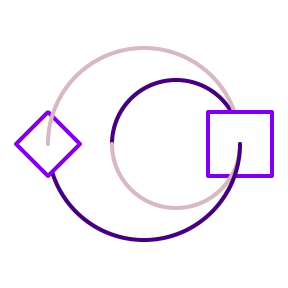
Moveworks Semantic Match™
Unlike other enterprise search systems, our solution intelligently surfaces information by considering context. With this 360-degree view of your organization, our relevance and location models retrieve the most accurate answer.
Semantic Match™ takes every piece of this disparate data into account, from the words and phrases employees use to the resources available to the person asking. For example, if an employee asks for an update on health care benefits — the bot can offer information based on the user’s location. So employees get a quick and straightforward answer in seconds that is personalized to their specific circumstances.
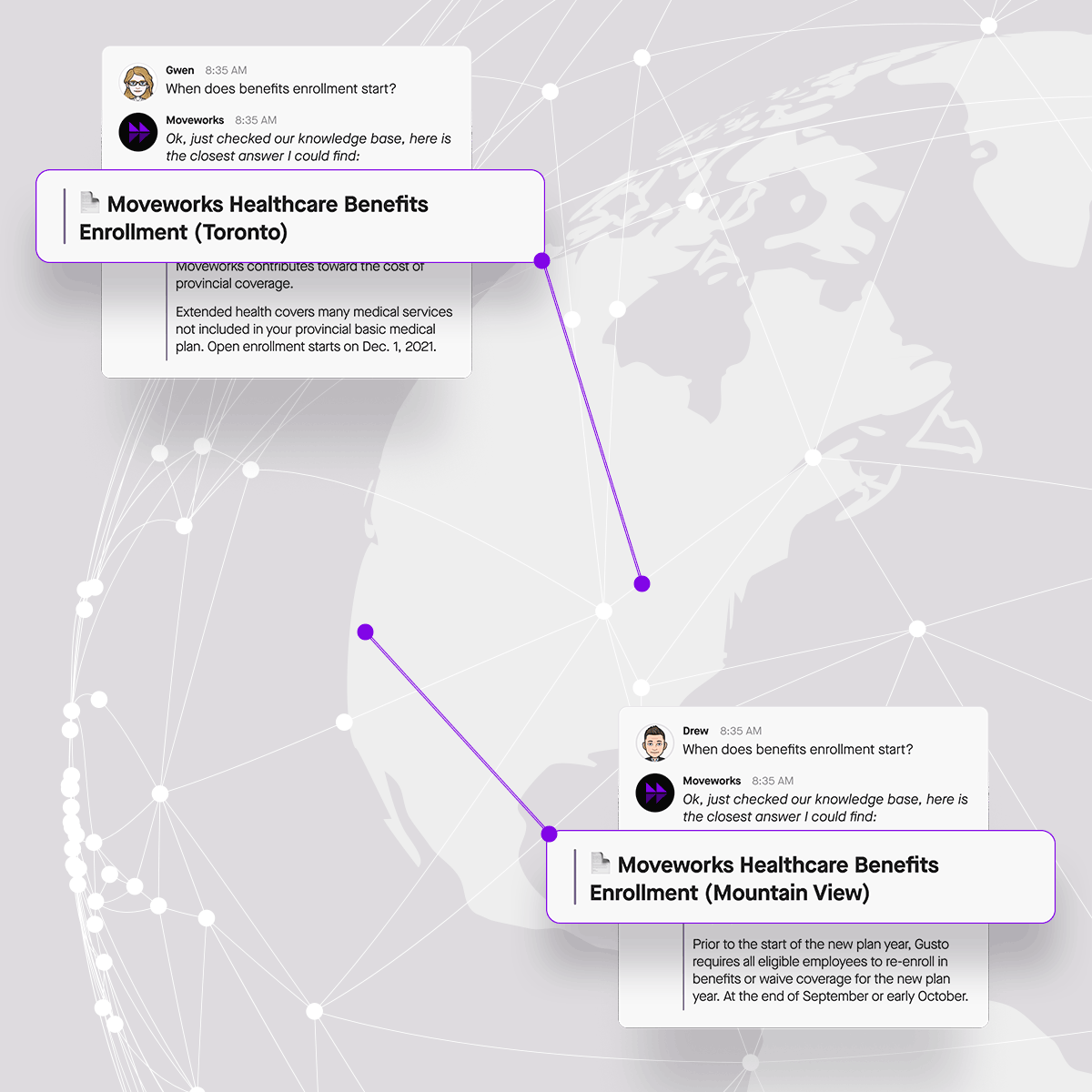 Figure 5: Keeping track of an employee’s location, department, and other information, a chatbot can surface information relevant to a specific employee.
Figure 5: Keeping track of an employee’s location, department, and other information, a chatbot can surface information relevant to a specific employee.
All enterprise answers in one place
Google's accomplished an incredible feat with consumer search. It’s more than a household name — it’s a verb. At Moveworks, we want to do the same for getting answers at work.
That’s why we’ve built layers of technology to connect employees with the resources they need and to allow talented professionals to do high-value work, not answering the same question, day after day.
With Language Core™, we deeply understand the language employees use to describe their issues.
With Enterprise Cache™, we transform support resources to direct every question to the right resource.
And with Semantic Match™, we deliver personalized answers, connecting symptoms to solutions.
So — HR experts can focus on perfecting the employee lifecycle. IT teams can focus on large-scale digital transformation efforts. And employees get what they need to work on the projects that matter.
Interested in learning more?
To learn more about why NLU matters for IT, and how it helps deliver enterprise help more quickly and more easily, see our posts:
The Practical Guide to NLP and NLU
Tailor-made tech support: Why employees need personalized IT help
Strength in numbers: Understanding unique IT issues with Collective Learning

